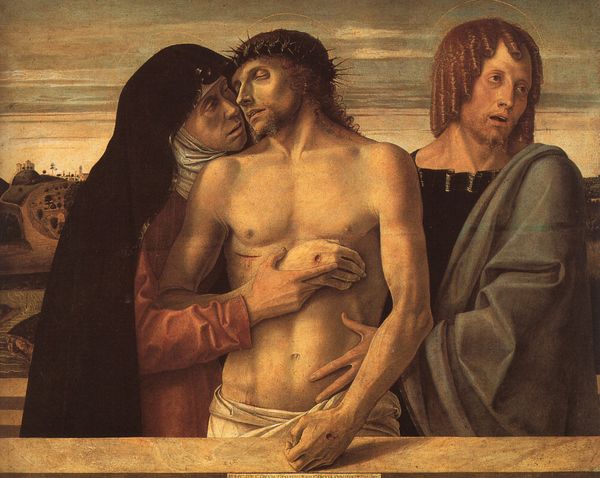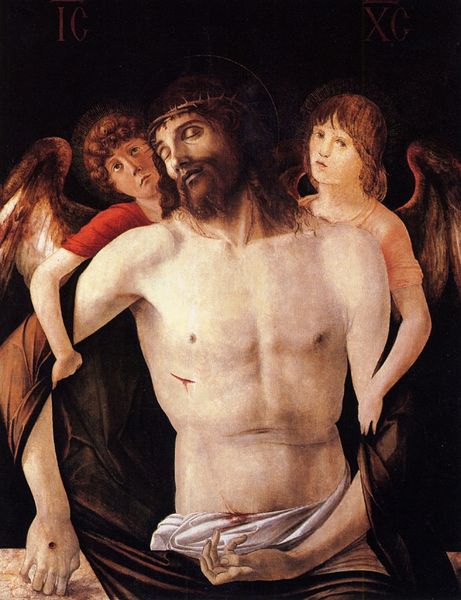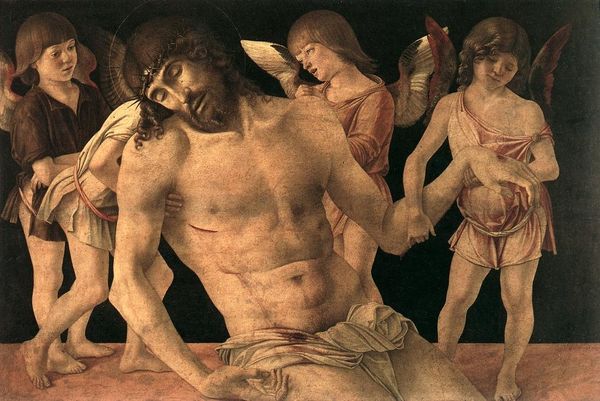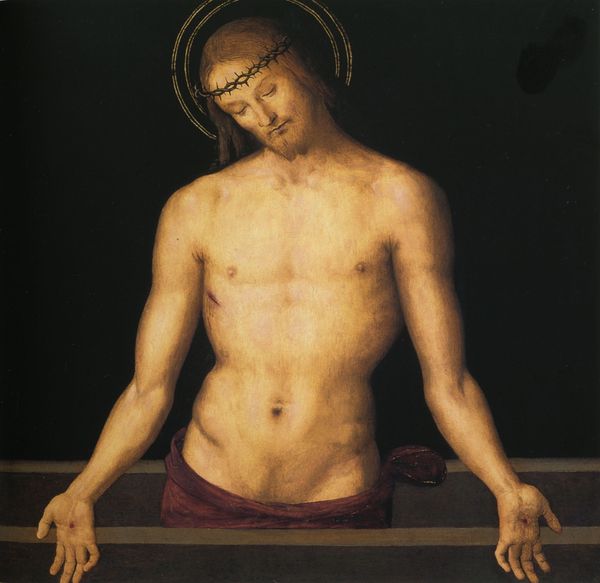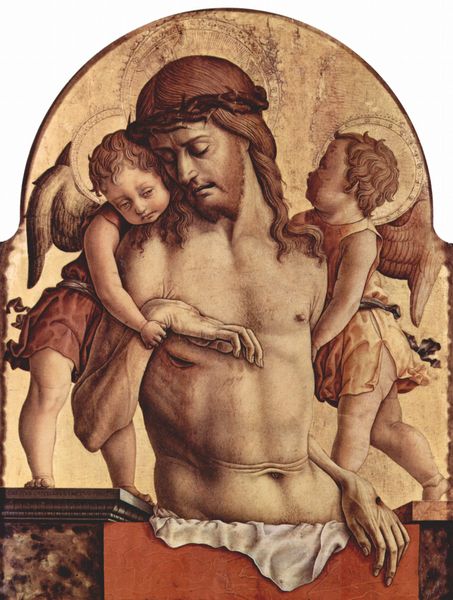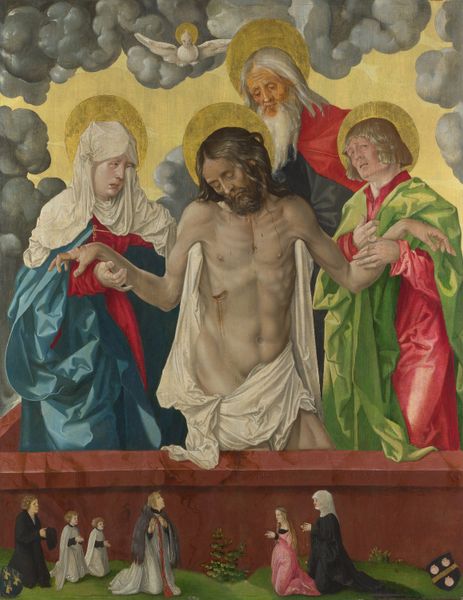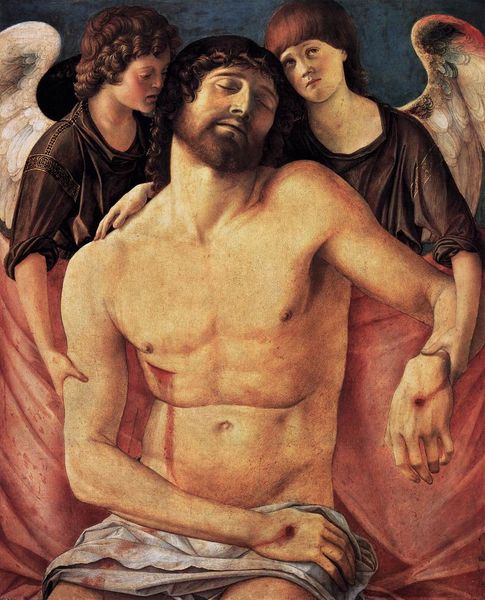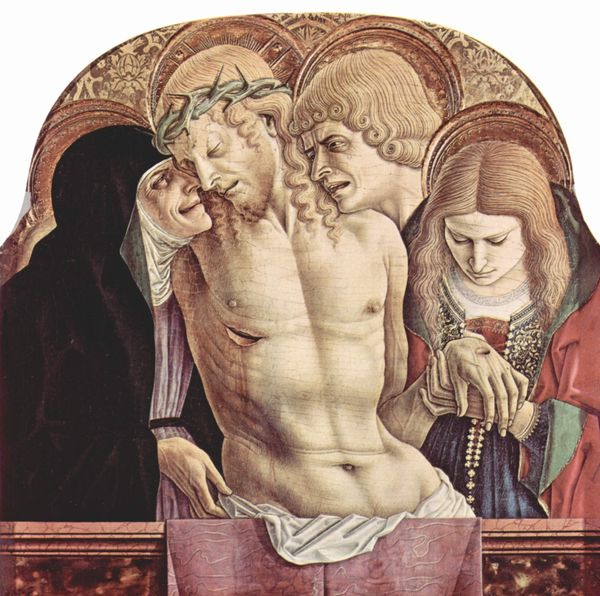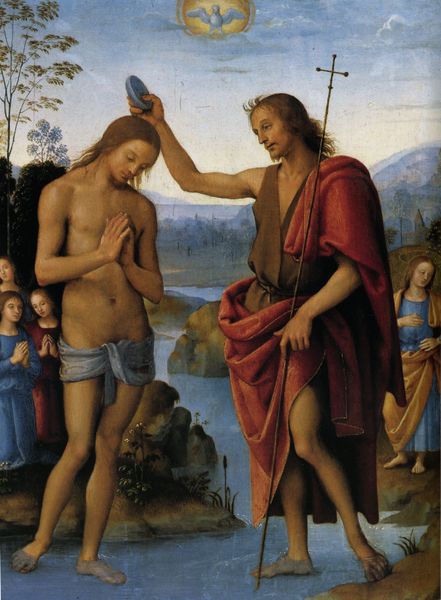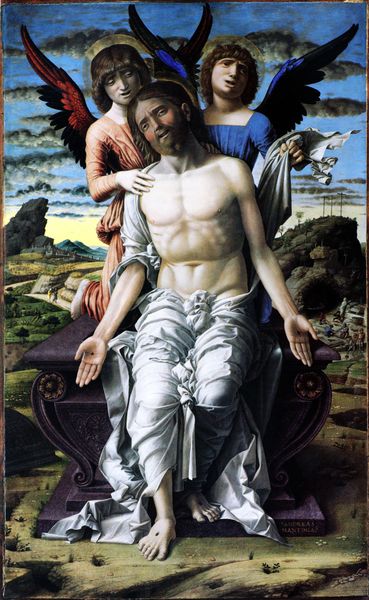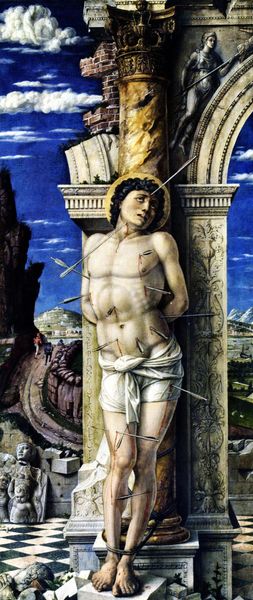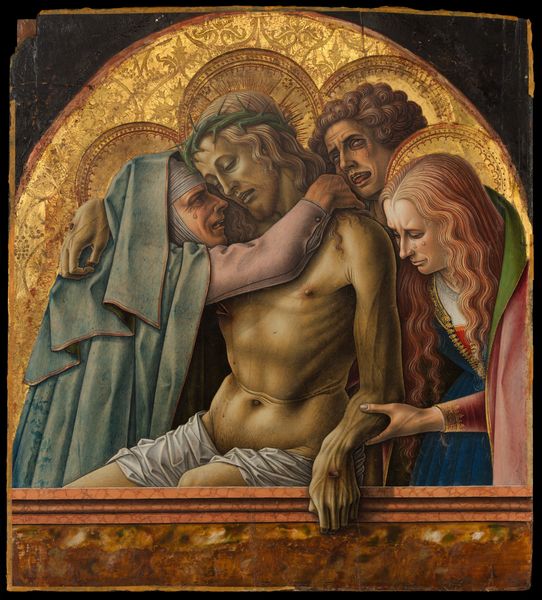
painting, oil-paint
#
portrait
#
allegory
#
painting
#
oil-paint
#
figuration
#
oil painting
#
christianity
#
mythology
#
history-painting
#
italian-renaissance
#
angel
Dimensions: 74 x 50 cm
Copyright: Public domain
Curator: This painting, "Dead Christ Supported by Two Angels," created around 1460 by Giovanni Bellini, offers a profoundly moving exploration of suffering and divinity, steeped in the visual and theological currents of the Italian Renaissance. Editor: My first impression is one of unsettling stillness. The stark pallor of Christ's skin contrasted with the angels' flushed faces, and the almost architectural landscape in the background, create a disquieting calm, as though the entire world holds its breath. I am intrigued by Bellini's material choices here – it appears to be oil paint, but its smoothness almost gives it the quality of fresco. Curator: Indeed. Bellini’s rendering resonates deeply within its socio-political context. This particular representation, echoing earlier Byzantine imagery, uses Christian iconography to subtly explore themes of political power, justice, and the fragility of life. Think of Venice as the setting. The choice to humanize Christ underscores the shared human experiences of suffering and mortality, bridging the divide between the sacred and the everyday. It asks who will be protected and whose labour will be sacrificed. Editor: I agree about the material humanity of the figure of Christ and that relates to its production. What labour extracted the pigments, processed the linseed oil, prepared the panel, and finally painted this? And note that Bellini, as one of Venice’s most famed painters, could choose the best artisans and craftspeople of his day for any number of those materials. That is part of what gives it the uncanny quality. Curator: Absolutely, it's important to see that within its construction. The use of oil allows for greater nuance in skin tones and texture. Observe the delicate handling of the brushstrokes defining Christ's wounds and the angel’s wings. This, juxtaposed with the subject matter, reflects broader artistic debates about realism, emotion, and the artist’s role within Venetian society, perhaps even influencing such diverse figures as Titian and Giorgione. I'd like to argue it’s less a simple presentation of religious doctrine, and more a contemplation of Venetian values regarding charity and social welfare in this period. Editor: You raise a really vital point. But let's consider too that there were craft hierarchies. The skilled labour behind this work isn’t uniform: there is both human suffering portrayed within and potentially exploited labor invested in its creation. The oil medium allows the artist to build layer upon layer; he may be inviting us to uncover layers of material reality that usually remain unseen. Curator: On reflection, the power of "Dead Christ Supported by Two Angels" rests precisely in this multifaceted intersection: technique, artistic genius, materials, labor conditions and socio-political implications – an exquisite image embodying a deep well of historical complexity. Editor: Yes. I initially reacted to the stillness, but discussing these various components really brings forth how this moment exists in material time as well as spiritual.
Comments
No comments
Be the first to comment and join the conversation on the ultimate creative platform.
